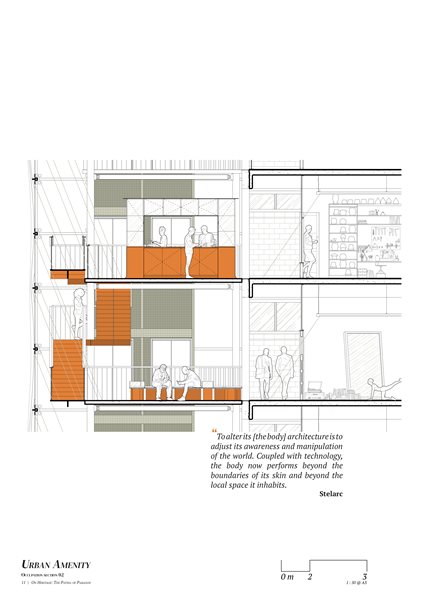A building changes, cities around a building change, modes of inhabitation change.
Yet, ‘heritage’, as a framework for recognising value, favours tangible matter over intangible significance and use. Effecting change continuously, inhabitation resists the singular point that heritage is predicated upon.

This is the paradox of patina: the accreted markers of use and age are valued for the history they embody yet they are often discouraged from further development, at odds with the continuous flow of history.

This thesis proposes a reconception of the heritage object into a self-evident signifier of its own history, key themes of display and amplification have been explored as a means of bringing forth the patina of a building whilst facilitating its continued development.

The idiosyncratic history and occupants of the Nicholas Building (built 1926) has here been dissected, its internals exposed to bring the building and its occupants into productive confrontation. Resulting in a frictional yet generative tandem: With each other and their own tangled histories.


